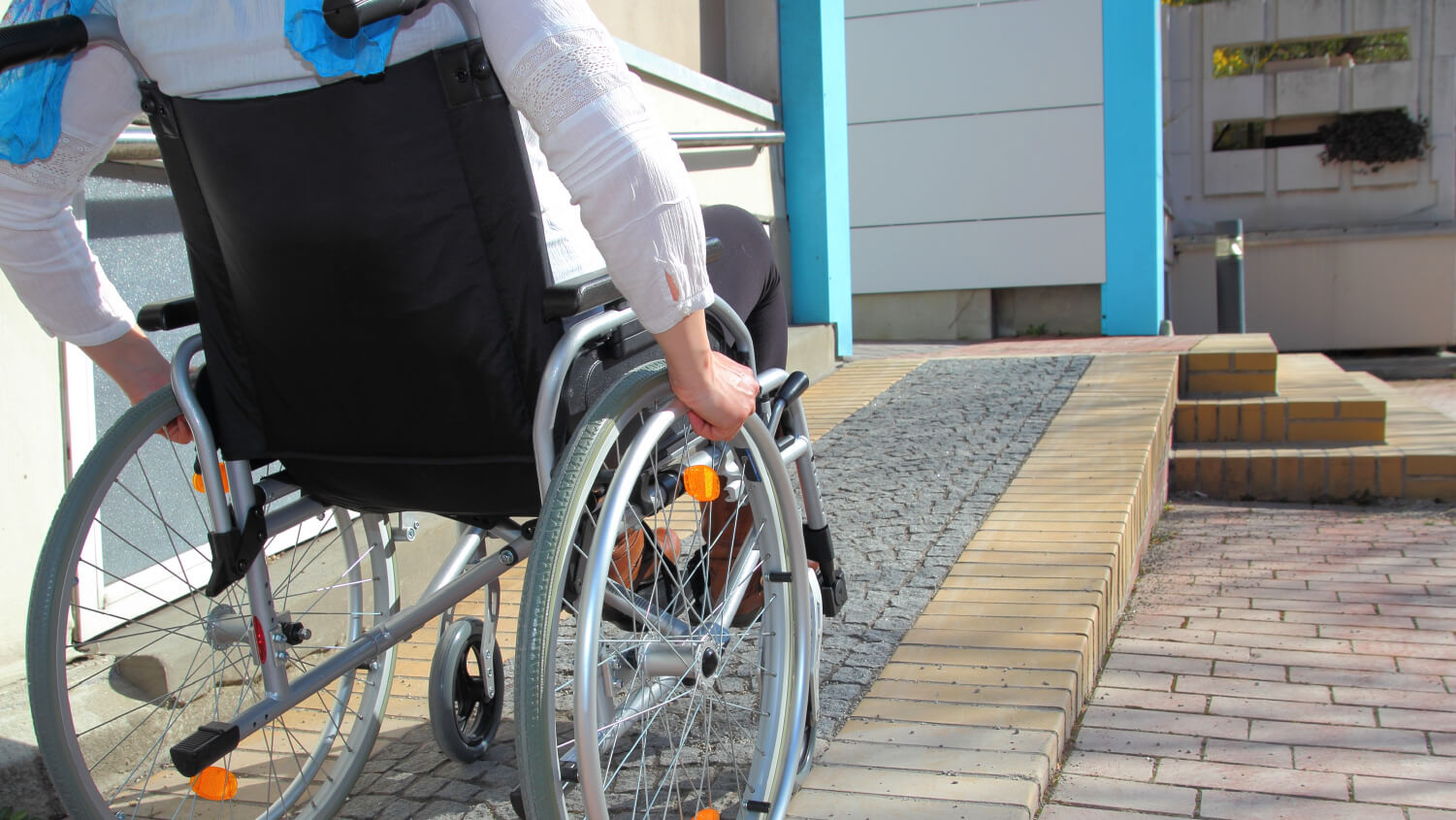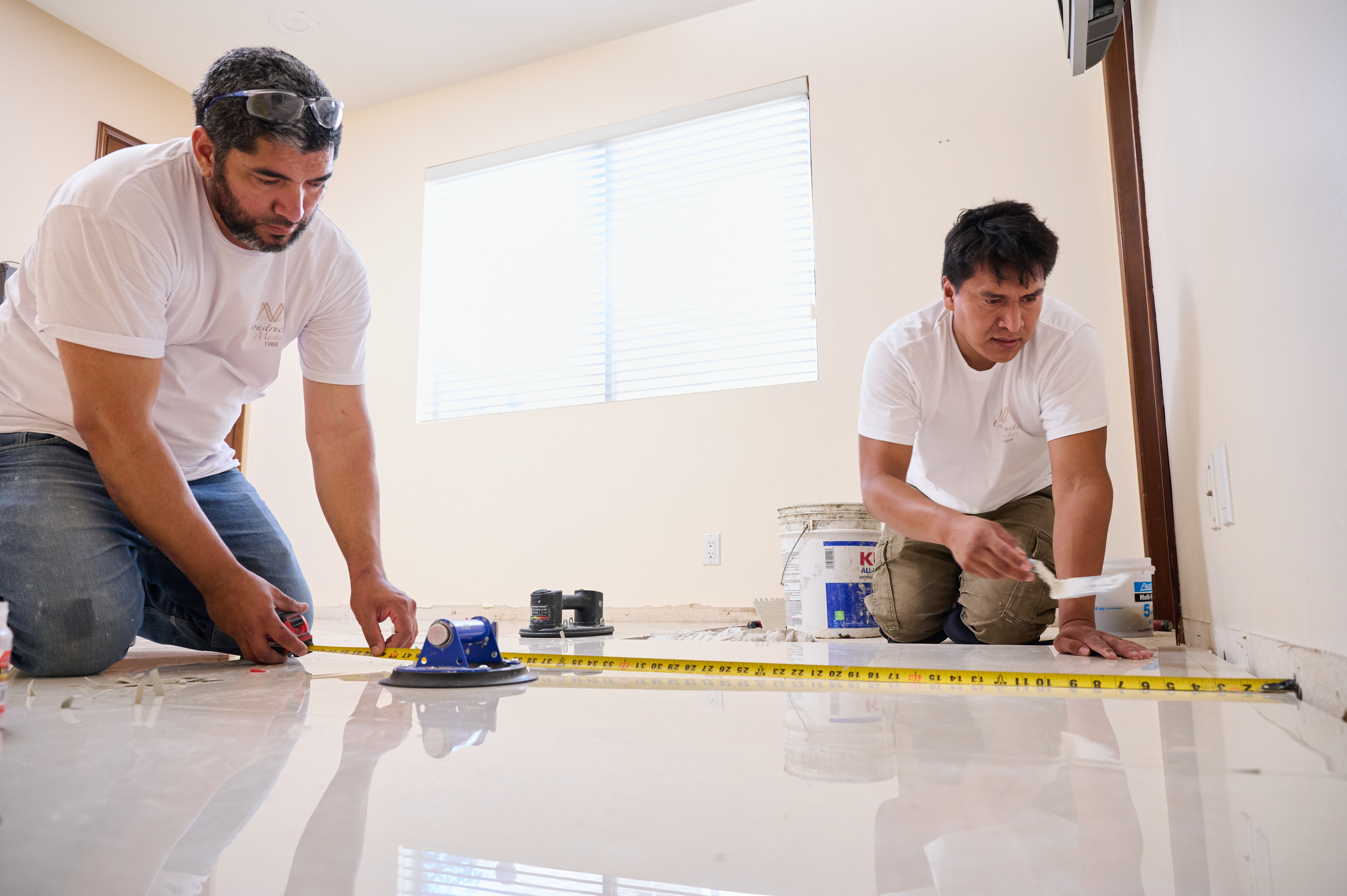
Discover wheelchair ramp cost estimates, including installation, materials, and tips to save. Learn what impacts your price and how to budget for your project.
Get a grip on your loose doorknob


There are few things more pesky than a loose doorknob that feels like it’s going to come off in your hands every time you open your door. If you’re having an issue with an exterior door, that seemingly harmless doorknob wiggle could be a security issue. In either case, you’re looking at a relatively easy and inexpensive fix. Use this guide on how to fix a loose doorknob to get your problem sorted out in just a few minutes.
Before you get started, you should understand certain parts of a door and a doorknob so that the steps below make sense:
Bore hole: This is the large hole through the door in which the entire doorknob mechanism sits.
Deadbolt: On exterior doors, this is a large separate latching mechanism for security.
Inside knob: The doorknob on the inside of the home or room.
Latch: The part of the doorknob assembly that fits into the strike plate or latch plate and moves in and out as you turn the knob.
Latch plate: The plate that catches the latch and prevents the door from opening.
Nut: This is what holds your doorknob onto your door. One side of the knob contains small bolts that screw into threaded tubes on the other side of the knob.
Outside knob: The doorknob on the outside of the home or room.
Rose mounting plate: A smooth, decorative plate that hides the mounting nuts. This may or may not be present, depending on the type of doorknob you have.
Spindle: The middle portion of the doorknob that ties the outside knob to the inside knob.
Additionally, it’s always a good idea to prop your door open before you start working on it, and keep someone on the other side just in case you run into an issue. There’s a chance you could mess up the binding of the doorknob, which could leave you unwillingly locked behind your door.
On some doors, you may struggle to find any mounting bolt or screw heads to tighten. If you don’t see heads on either the inside or outside of the doorknob, the knob likely has a rose mounting plate to hide them. You must remove the mounting plate before you can tighten the doorknob.
Start by looking around the perimeter of the mounting plate for a set screw. The set screw holds the mounting plate in place.
If there is a set screw, unscrew it using a small flathead screwdriver.
If there is no set screw, gently pry off the mounting plate. Be careful not to damage your door.
Pull the mounting plate as far away from the door as you can until the knob blocks it from moving further.
Look for a small lever around the outside of the knob, and tilt it upward or downward. This should release the knob and mounting plate entirely and give you access to the mounting nuts.

When doorknobs get loose, the entire mounting set tends to rub against the door during use, which can wear away paint, finish, or the actual wood of your door. If that’s the case, hold your doorknob in the center of the area that’s worn away. This will give you the best chance of lining up the locking and turning mechanisms, and it will hide the wear.
If your type of door lock required you to remove a rose mounting plate, then your mounting nuts should now be easy to access. If your knob doesn’t have a mounting plate, then the bolt heads will be accessible from the start. Either way, tighten the nuts while you or a helper hold the knob in the center of the worn area.
Be careful not to overtighten these. Doing so will cause the mechanisms inside to bind, which could lead to your door not functioning properly.

Make sure you have someone on the opposite side of the door just in case your door loses functionality. Close the door, and test the knob. Check for easy latching and unlatching, as well as any remaining wiggle in the knob itself. You might need to reinstall the inside handle first if you removed it in a previous step.
Finally, you’ll reinstall the rose mounting plate if your knob has one. Place the handle on the plate and push the lever back into its original place. Slide the loose plate back over the assembly, and secure it with the set screw, if applicable.
Just about any homeowner can easily learn how to fix a loose doorknob, and since the work requires minimal tools, most people should be able to get the job done quickly and without purchasing anything.
If you’re looking to save yourself time, you can’t seem to figure out how your mounting plate releases, or you’re concerned that you may compromise the security of an exterior door, it might be worthwhile to hire a handyman service near you. Given how quick and easy the work is for a professional, this door repair cost shouldn’t cost more than $25 to $50, and it could cost as little as $5 if you want it done in addition to other services.
From average costs to expert advice, get all the answers you need to get your job done.

Discover wheelchair ramp cost estimates, including installation, materials, and tips to save. Learn what impacts your price and how to budget for your project.

Learn how much it costs to board up a window to buy yourself some time and maintain home security while you wait for the permanent repair.

Looking to add a personal touch or some patriotic flair to your property? Learn about flagpole installation costs and how to budget appropriately.

For homeowners who struggle to keep up with household chores, or those whose health prevents them from doing certain tasks, hiring help with chores around the house can be a huge help.

Learning how to read a tape measure properly is one of the first—and most important—steps on the road to being a great DIYer. Let's break it down.

Before starting a project, it’s important to decide whether you buy or rent tools. The best option will depend on what you’re doing and the project magnitude.